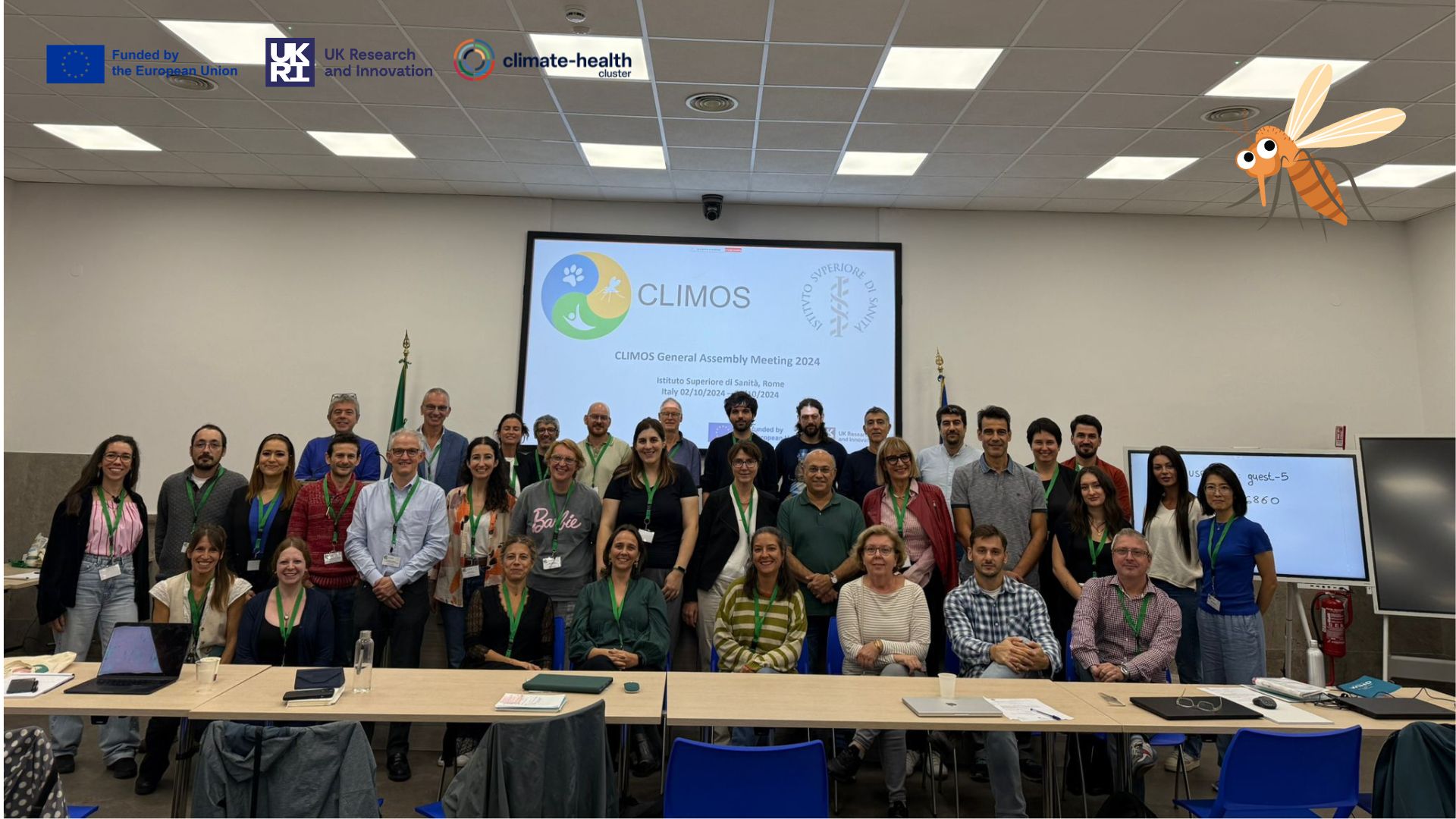University News
Fighting against diseases transmitted by sandflies: the international CLIMOS project is progressing
In October 2024, the CLIMOS General Assembly, organized by the Istituto Superiore di Sanità in Rome, marked a new milestone in the fight against diseases transmitted by sandflies, thanks to research efforts. The University of Reims Champagne-Ardenne (URCA), a partner of CLIMOS through the ESCAPE research unit, actively participated in the discussions of this meeting, which marks the end of the second year of the project.
CLIMOS, an international project bringing together 29 partners, follows a collaborative approach involving researchers, healthcare institutions, and vulnerable communities, aiming to understand the impact of climate and environmental changes on sandfly-transmitted diseases (STDs). The project aims to develop public health management solutions, including an interactive platform to adapt health strategies in response to STDs.
Since the last meeting, significant progress has been made:
More than 35,000 sandflies have been collected and analyzed, allowing the identification of 93% of them at the species or subgenus level, with 19 taxa (groups of similar species) spread across seven subgenera.
The detection of the Leishmania parasite has been carried out in several European countries, and publications on the vector competence of various sandfly species are ongoing.
An innovative semiochemical adhesive trap to attract sandflies has been developed, and research is ongoing to identify recombinant salivary antigens useful as exposure markers.
The deployment of an Early Warning System (EWS) has also begun to provide local authorities with the information needed for a swift response. This promising system is made possible thanks to its database, constantly updated with the latest research results.
Thanks to the combined efforts of the partners, CLIMOS is positioning itself as a major project for international public health, addressing the challenges of adapting to emerging diseases in the context of climate change.
What is a sandfly?
A sandfly is a small insect, measuring between 2 and 3 mm, belonging to the Psychodidae family. Despite its small size, it plays a crucial role in the transmission of parasitic diseases, notably leishmaniasis. Female sandflies feed on blood, which is necessary for the maturation of their eggs, and during this process, they can transmit the Leishmania parasite to their hosts, including humans. Unlike female mosquitoes, female sandflies do not sting; they cut the flesh, like a horsefly. Hence, its name "sandfly," derived from the prefix phlebo- ("vein") and the suffix -tome ("cut"), meaning "vein cutter."
Leishmania and Leishmaniasis
The genus Leishmania is a group of microscopic unicellular parasites responsible for leishmaniasis, a disease that can manifest in several forms, ranging from skin lesions (cutaneous leishmaniasis) to more severe forms affecting internal organs (visceral leishmaniasis). The transmission of the parasite occurs almost exclusively through the bite of infected sandflies. The fight against this disease requires both vector surveillance efforts and advancements in medical treatments. In France, about 15 cases are reported annually, but some individuals may be asymptomatic carriers. Indeed, the parasite only manifests when immunity is weak.
